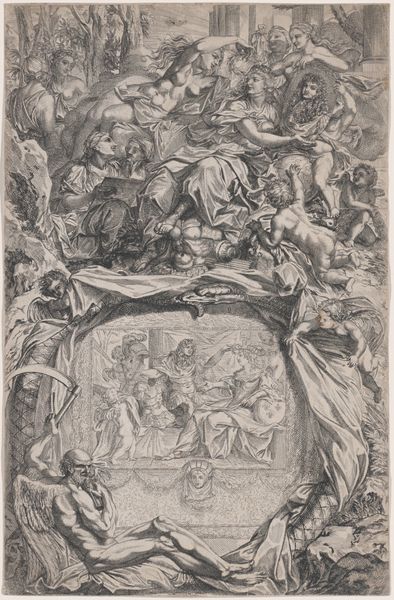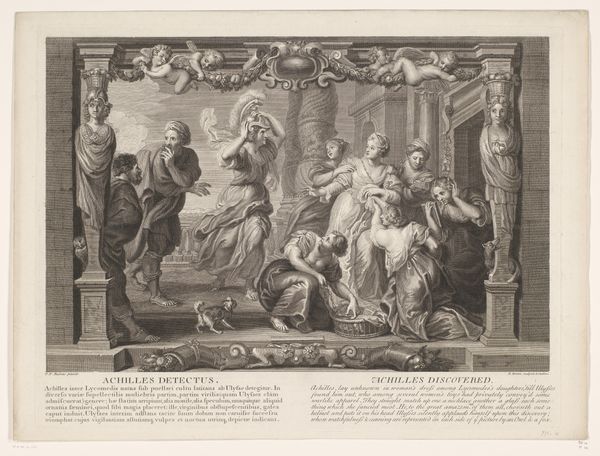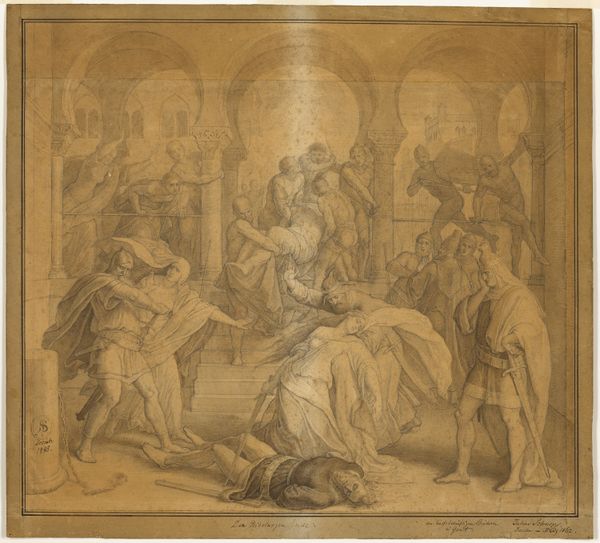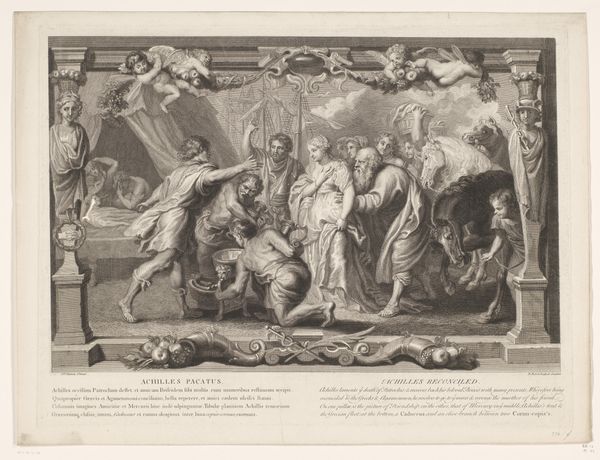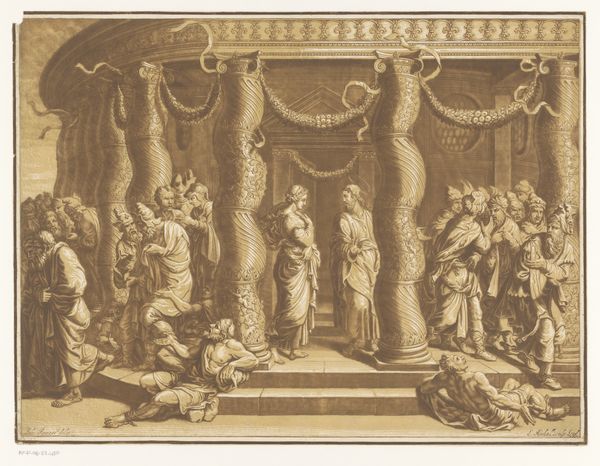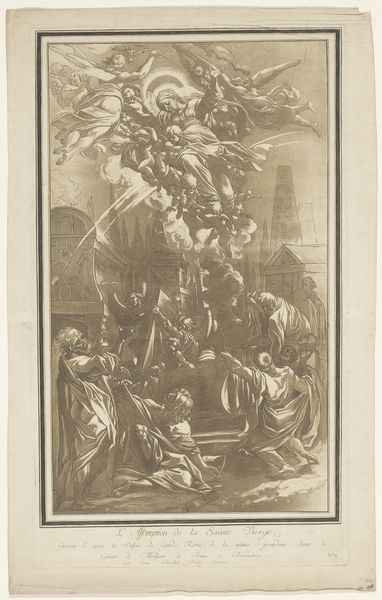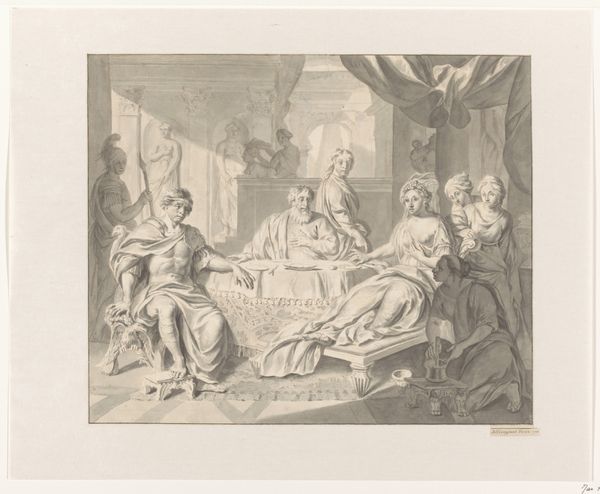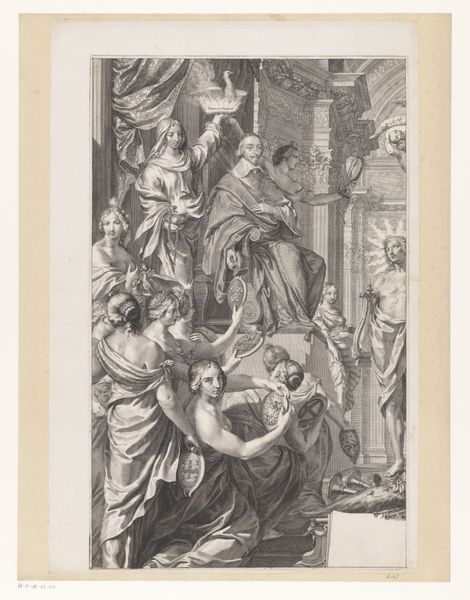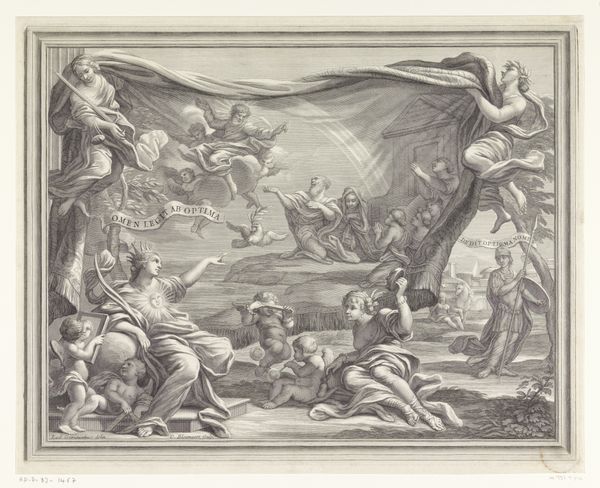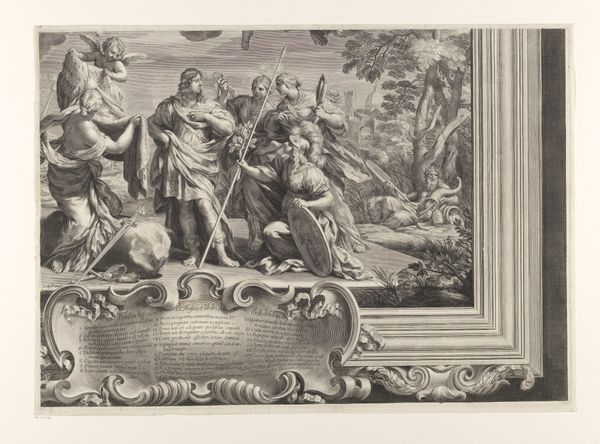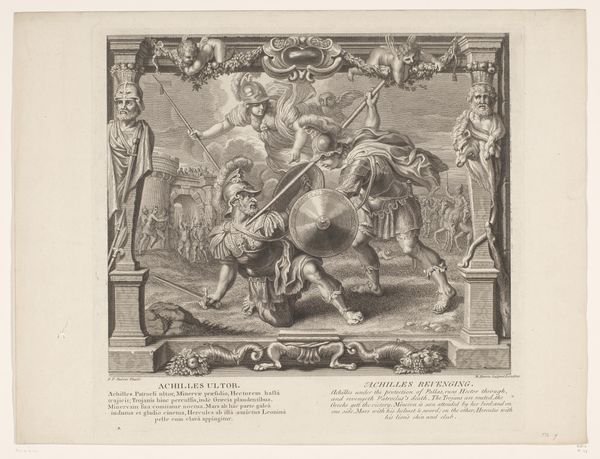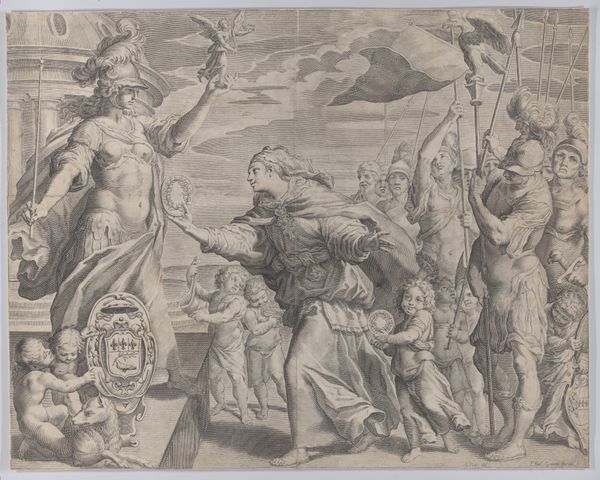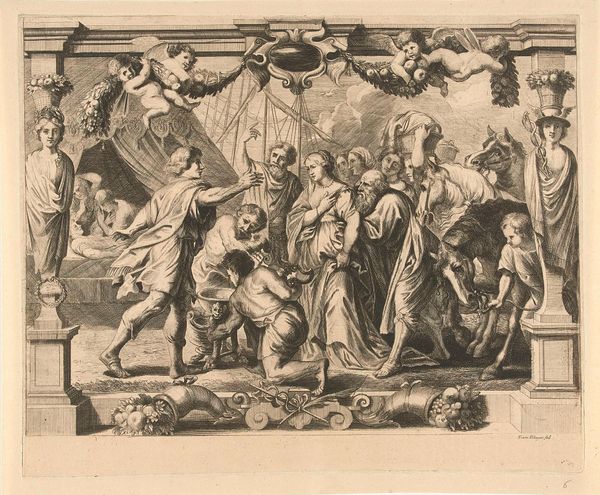
engraving
#
baroque
#
sculpture
#
figuration
#
history-painting
#
engraving
Dimensions: height 522 mm, width 730 mm
Copyright: Rijks Museum: Open Domain
Curator: Etienne Picart’s engraving, "Triumph of the Eucharist over Idolatry," likely created between 1670 and 1680, is an incredibly dynamic piece. What's your first take on it? Editor: There's an immediate tension visible in this image; so many bodies crammed into one composition struggling to get this large animal off of its feet. There's also so much attention to detail - how was this accomplished through engraving, of all methods? Curator: The drama definitely speaks to the Baroque style. Look how Picart uses the Eucharist, this small bright object at the very top, as a central figure of importance to legitimize power; who possesses it and the right to protect it? The work serves as commentary on religious dominance, suggesting how systems in power demonize, punish, and threaten opposition to maintain power. Editor: I'm curious how much the choice of engraving directly reinforces the message of power through production: repeatable, standardized images for broad consumption. Consider the paper itself, a manufactured item—the physical process behind these multiple images parallels the act of dissemination central to ideological triumph. The paper provides a smooth, reliable surface where ink is reliably absorbed—creating contrast. What did the Baroque print shop look like that supported such art? Curator: Exactly. This speaks to a time when images like these played a crucial role in shaping political and religious beliefs, particularly in regions marked by religious conflict. Those figures wrestling that animal seem to reflect those struggles of various classes in France and the Netherlands. Editor: Let's remember this too is after the Reformation and amidst considerable social and political transformation across Europe; how does Picart’s piece stand as a piece of propaganda that supports traditional hierarchies? Who can read? What images are common in both sacred and public space? This makes this engraving all the more relevant, no? Curator: Absolutely. The choice of allegory as a device reinforces the intellectual and class biases that underscored social structures of the period. Its language could speak directly to an educated elite. We're left thinking about who it was that possessed cultural literacy, as well as images of punishment, to interpret and internalize this image. Editor: Well, considering both the labor behind its making and its intended reception really highlights how much Picart's engraving does indeed show an intended 'triumph’ not just of faith but in reinforcing the systems in place that held power over common society.
Comments
No comments
Be the first to comment and join the conversation on the ultimate creative platform.
